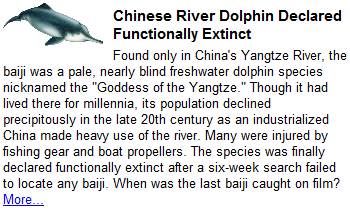Banks have historically been the principle source of liquidity and major market makers in Forex market. Banks dealing in forex and other providers of liquidity to the market are referred to as sell-side players. A customer (including a multinational bank or a treasurer) interested in engaging in forex transaction was required to call his/her bank and place a ‘Request for Quote’ (RFQ). Depending upon the credit rating of the customer, the bank would provide him/her a quote based on the current pricing of desired currency and a mark-up. For obtaining the best and the fairest price available, the customer would therefore be required to call several banks to place RFQs. This is however an inefficient and cumbersome process, given the number of phone calls, assembly of the quote information from several banks, and then placing of additional phone calls to finalize orders. Besides, the customer would also be required to have a credit established with all these banks prior to placing RFQs.
Alternatively, for achieving the best and fair deal, the customer can simply visit web sites of several banks and get quotes and place orders online. Almost all the sell-side dealers now offer an online portal for forex dealings. Several banks now maintain Forex trading via the FIX Protocol Specification, in support of both executable streaming prices and the Request for Quote trading model. Currently, there are also several multi-bank foreign exchange portals available on the internet wherein a large number of multi-national banks, such as JPMorgan Chase, Deutsche Bank and Citibank, provide their quotes to a portal. By subscribing onto such portals, customers can receive and view, at one location, a set of quotes from some of the largest providers of liquidity in the foreign exchange market.
Availability of several Forex avenues can be beneficial for buy-side traders as they can spread their orders over as many different venues while maintaining anonymity. However, this also increases complications as information regarding actual orders for foreign exchange simultaneously exists on several Forex trading platforms including direct bank quotes, electronic exchange and multi-bank portals. When liquidity is fragmented, multiple trading venues or destinations are required to complete a given order size at a given price which leads to direct and indirect costs for buy-side traders. The direct costs include ticket charges for splitting orders across portals. Adding new portals also increases the chances of information leakage. The time spent searching for liquidity across venues and associated overheads involved in connecting to each venue adds to the indirect costs. Moreover, a customer who subscribes to several portals and is a member of several exchanges may need several screens in front of him to be able to view and take advantage of all of the information available simultaneously. Dispersed liquidity therefore leads to increase in trades, decrease in order sizes, thus making it extremely difficult to gain complete market visibility which further results in higher costs and inefficient executions. Fragmentation of liquidity is the single most important reason why seeking liquidity and aggregating the market for optimizing execution is the key for players in Over-the-Counter Forex market.
Forex Aggregators effectively address the issue of fragmented liquidity by linking traders and brokers, as well as liquidity providers to one another to facilitate and provide for distribution of foreign exchange information and execution of foreign exchange transactions. Developed on Complex Event Processing (CEP) technology, Aggregators facilitate price discovery and provide buy-side institutions and traders with the best price offer and increased liquidity by aggregating liquidity providers. In simple words, Aggregation services enables buy-side firms to easily access a range of different liquidity streams including bank APIs, ECNs and other multi-bank platforms through a single screen.
Liquidity aggregation tools can be classified into two broad categories. The first category is typically an Execution Management System, which create an organized and integrated environment where various market participants can come together to provide full visibility and transparency. Such tools have open and clear rules for price discovery and trade execution. Integral’s FX Grid and FX Inside Professional trading platforms fall into this category.
The second type of liquidity aggregation is often referred to as ‘Aggregators’. Evolved from CEP technology, they provide aggregation engines or algorithmic engines to buy-side traders for developing and executing ‘black box’ trading methods that are inherently non-transparent. Players that employ these engines can program them to decide when and how to trade as well as using aggregation for price discovery and best execution. In contrast to Execution Management Systems, Aggregators have no rules guiding their execution models. They can filter and display the market data according to the pre-defined criteria of the end user. Players can therefore use them for arbitraging one source of price with another.
Submit Articles to the ArticleSnatch.com Directory - Article submission and content you can use for free at ArticleSnatch.com
Tuesday, October 6, 2009
Subscribe to:
Post Comments (Atom)
Find work from home!
Find more freelance jobs
Word of the Day
Word of the Day
provided by The Free Dictionary
Quote of the Day
Quote of the Day
provided by The Free Dictionary
Article of the Day
Article of the Day
provided by The Free Dictionary
This Day in History
This Day in History
provided by The Free Dictionary
Today's Birthday
Today's Birthday
provided by The Free Dictionary
In the News
In the News
provided by The Free Dictionary












No comments:
Post a Comment